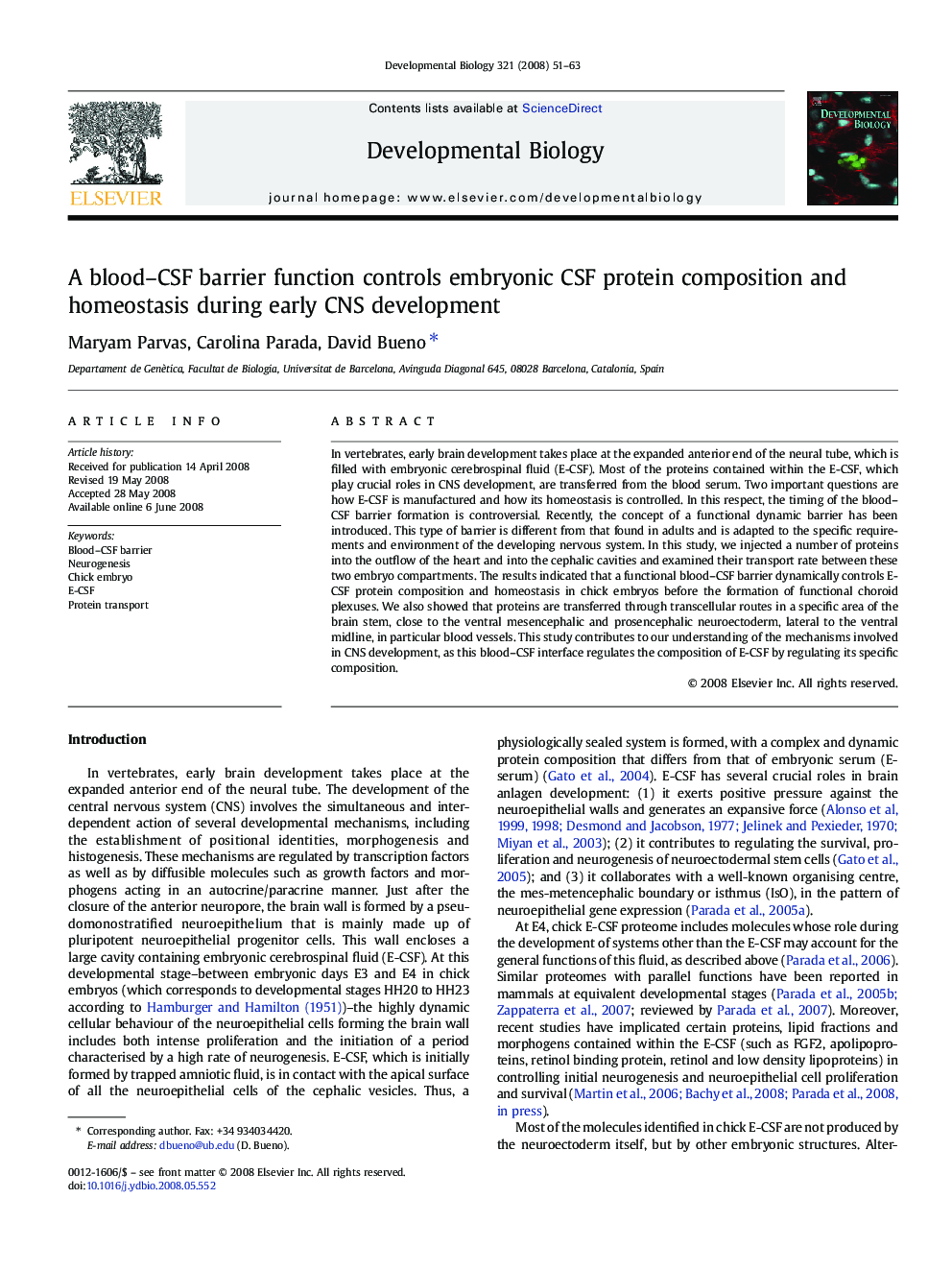| Article ID | Journal | Published Year | Pages | File Type |
|---|---|---|---|---|
| 2174418 | Developmental Biology | 2008 | 13 Pages |
In vertebrates, early brain development takes place at the expanded anterior end of the neural tube, which is filled with embryonic cerebrospinal fluid (E-CSF). Most of the proteins contained within the E-CSF, which play crucial roles in CNS development, are transferred from the blood serum. Two important questions are how E-CSF is manufactured and how its homeostasis is controlled. In this respect, the timing of the blood–CSF barrier formation is controversial. Recently, the concept of a functional dynamic barrier has been introduced. This type of barrier is different from that found in adults and is adapted to the specific requirements and environment of the developing nervous system. In this study, we injected a number of proteins into the outflow of the heart and into the cephalic cavities and examined their transport rate between these two embryo compartments. The results indicated that a functional blood–CSF barrier dynamically controls E-CSF protein composition and homeostasis in chick embryos before the formation of functional choroid plexuses. We also showed that proteins are transferred through transcellular routes in a specific area of the brain stem, close to the ventral mesencephalic and prosencephalic neuroectoderm, lateral to the ventral midline, in particular blood vessels. This study contributes to our understanding of the mechanisms involved in CNS development, as this blood–CSF interface regulates the composition of E-CSF by regulating its specific composition.
